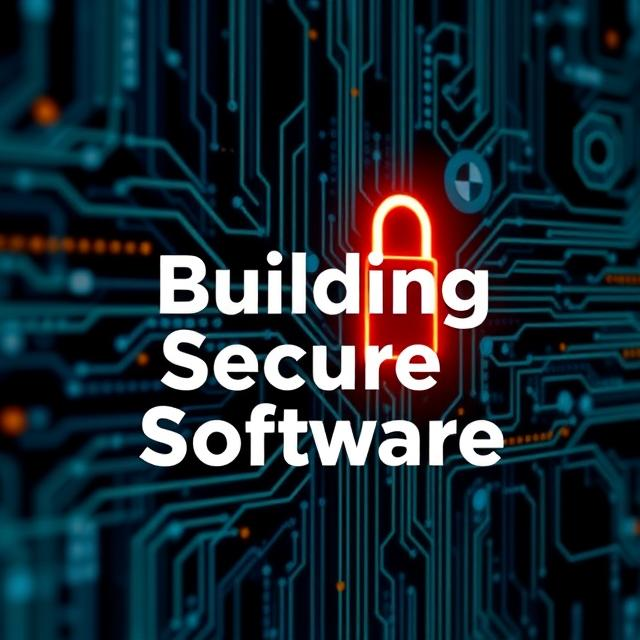🔍 Why Should You Care about Software Security?
Lots of devs put their energy into making software with cool features and quick speeds. But a lot of times, they don’t pay enough attention to security. That’s a big problem because weak security can mean:
🔹 Data breaches – Some sneaky hacker might swipe your private info. 🔹 Malware attacks – There’s a chance your software could get messed up. 🔹 Unauthorized access – A hacker might get the keys to your accounts. 🔹 System crashes – Some bad guy could find the weak spots and make everything go kaput.
So, if you get smart about security right from the get-go, you’re dodging bullets before they’re even fired.
🛡️ 1. Write Code That’s Tough to Crack
🔴 The Danger:
If you code badly, you might leave openings for security breaches. This lets hackers mess with your programs more .
✅ Secure Coding Essentials:
✔ Make sure to check user entries to stop SQL injection attacks. ✔ Stick to safe coding principles such as the OWASP guidelines. ✔ Don’t put passwords or API keys straight into your scripts. ✔ Keep error messages vague to avoid giving away system info.
💡 Here’s the scoop: Say there’s this website form, and it lets folks type stuff in with zero checks. Some bad actor could pop in nasty scripts that swipe or wipe your database clean.
🔑 2. Beef Up User Sign-Ins
🔴 The Danger:
If sign-in security is weak, it’s a piece of cake for baddies to sneak into user profiles.
✅ Boosting Security Measures:
✔ Activate multi-factor authentication (MFA) as it offers an additional layer of defense. ✔ Keep password management tight by employing hashing methods such as bcrypt. ✔ Mandate strong password rules to block simple guesses. ✔ Choose OAuth or JWT over session-based sign-ins for user verification.
💡 Example: Imagine a banking application lets folks use basic passcodes like “123456”; that’s a cakewalk for cyberthieves using brute-force assaults to crack into profiles.
🔐 3. Put a Lock on Private Info
🔴 The Danger:
Leaving details out in the open in plaintext form hands the bad guys a chance to snatch and exploit them unchecked if they pull off a heist.
✅ Data Protection Tactics:
✔ Deploy SSL/TLS encryption to safeguard data in transit. ✔ Apply AES-256 encryption to data at rest. ✔ Conceal sensitive details such as personal info and credit card digits.
💡 Example: A site saving passwords as plaintext risks a severe security breach if its database gets hit. Password encryption guarantees safety even when they’re nicked.
🛠️ 4. Strengthening APIs and External Services
🔴 The Danger:
APIs can often be doors to cyber threats without right security.
✅ Ways to Fortify Your APIs:
✔ Authenticate using “API keys” and “tokens.” ✔ Set limits on how many API requests can be made to stop misuse. ✔ Give API access just for what you need. ✔ Double-check and clean up every input you get through your API to keep out harmful code.
💡 For instance, a defenseless “API endpoint” might let bad guys grab hold of important info about users without needing to ask first.
🔄 5. Update Your Software and Things it Depends On
🔴 Know the Danger:
Software or parts that aren’t up to date could have weak spots that are easy for hackers to take advantage of.
✅ Here’s How to Protect Yourself:
✔ Always refresh your frameworks and those things you depend on. ✔ Get those security holes patched pronto when you spot ’em. ✔ Use tools that automate stuff to sniff out those old libraries hanging around.
💡 No kidding: That Log4j mess-up shook up loads of apps. Why? ‘Cause they were clinging to some antique logging library. Stay on top of updates, and you dodge such bullets.
🛑 6. Block Those Usual Cyber Troublemakers
🔴 Here’s the Scare:
A whole bunch of hacks happen ’cause of sneaky tricks everyone knows, but devs sometimes forget to block.
✅ Do This to Fight Off Bad Guys:
✔ Avoid SQL Injection – Implement parameterized queries. ✔ Eliminate Cross-Site Scripting (XSS) – Cleanse user input. ✔ Prevent Cross-Site Request Forgery (CSRF) – Apply CSRF tokens.
💡 Tip: Say a web app lets folks punch in details with zero clean-up. Bad actors could slip in evil JavaScript to swipe session cookies and take over profiles.
📊 7. Keep an Eye on Security Threats and Record Actions
🔴 The Danger:
Skimping on checking security records might lead you to miss an assault in action.
✅ Ways to Spot and Stop Attacks:
Make sure you’re logging to keep an eye on dodgy actions. You gotta keep tabs on when someone’s logging in and getting it wrong to catch those brute-force attack attempts. And don’t forget, you should set off those alarms when stuff starts to look weird.
Like imagine some bad dude tries busting into your system with a million passwords, your setup should straight up block their IP, no questions.
Peek into your defenses often
There’s this thing you might not see:
You could miss some security holes if you’re not looking for them.
Here’s how you can sniff out the problems:
Make it a thing to do some pretend hacker attacks to see how strong you are with penetration testing. Get your hands on tools that check your code before and while it’s running. And hey, make a habit of going through your security checks often to spot the issues .
💡 Example: Ethical hackers also known as white-hat hackers, play the role of real assailants to examine security. This allows developers to mend weaknesses before cyber baddies take advantage of them.
